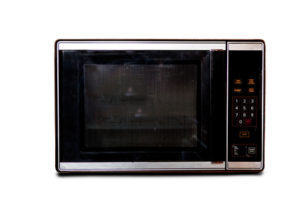5 Culprits That Waste Energy in Your Home

Heating and Cooling
Given how much money Americans spend to heat and cool their homes—in 2013, approximately $2,177 per family—it makes sense to invest in high-efficiency HVAC equipment that features a variable-speed air handler. A variable-speed air handler is essentially a “smart” fan. It runs nearly continuously at lower speeds to allow heated/cooled air to circulate evenly throughout the house. In the summer, the air handler removes humidity more efficiently because the fan runs almost nonstop at lower speeds.
According to the Appliance Standards Awareness Project (ASAP), furnace fans/air handlers consume 12 percent of the average household’s total electricity. An HVAC system with a variable-speed air handler allows your furnace and a/c to run at more than just one speed (high). Instead, it can run at a variety of speeds, using just enough electricity to power the fan to meet shifting heating/cooling needs.
Set-Top Boxes
Many electronics that appear to be off are, in fact, always on—a deceptive aspect of smart devices. Invest in Energy Star-qualified electronics when you upgrade your cable box, or buy a smart TV to cap the amount of electricity the devices consume in standby mode.
Chargers
Charging systems for cameras and phones draw phantom energy, too—they’re constantly drawing small amounts of juice unless you unplug them. You can reduce your home’s collective electricity draw by purchasing environmentally friendly charging platforms and power cords that automatically shut down when the device is fully powered. Or just be obsessive about unplugging them.
Gaming Devices
You wouldn’t want to sacrifice your PlayStation or Xbox to secure energy savings. And you don’t have to—just be smarter about turning them off. The Natural Resources Defense Council estimates that a person could spend up to $100 more per year on electricity by forgetting to turn off consoles (compared with leaving them on 24/7). Set your system to power-saving mode. Newer models now automatically shift into power-saving mode after a certain period of time.
Old Appliances
Standard home appliances continue to use power even when you’re not using them. One example is the microwave, or any appliance that features a digital display. Even if you’re not heating food, the power display uses energy 24/7. Avoid the nuisance of repeatedly unplugging appliances and having to reset the digital clocks by investing in energy-saving appliances that bear the Energy Star seal.





